We can look...
We can look at the illustrations in the book, particularly at how the gorilla’s family expresses their love. Moreover, how do the animals express their love to the little gorilla?
In our family...
In our family, how do we express our love to each other? We might hug, kiss, indulge and help… how would our child like us to express our love? How do we want our children to express their love to us?
We can talk...
We can talk about the animals’ reaction for the little gorilla’s growth as shown in the illustrations. What can we understand, and why? What do the gorilla’s facial expressions mean?
Find old photos...
Find old photos of your child and enjoy looking together at their growth process. We can talk about the important milestones in their growth: when they started to crawl, walk and eat alone. Undoubtedly, the child will feel proud when they show us what they are capable of doing now, especially when they are almost 4 years old!
We might have...
We might have another member in the family, such as a sister or a brother. We can have a conversation regarding the child’s capabilities compared to their siblings. It is a good opportunity to support the child to express the way they take care of their siblings, and what annoys them by their behaviors.
The child’s birthday...
The child’s birthday is a happy occasion for them and for us as well. We can have talk about their upcoming birthday: what date, who would they like to invite to their birthday party, and how they would like to celebrate?
Let's talk...
About birthdays: What makes our birthday a special day? What celebrations do we desire? What activities and events do we want? What gifts have we received or wish to receive?
About love and care: How do we feel when everyone collaborates to make us happy? How do we feel when we care for others and prepare surprises for them? We can recall enjoyable moments when our loved ones surprised us and we can discuss different ways to express love. We may agree on a daily or weekly activity to add a special touch to our lives, such as preparing a meal together, reading stories, playing together, and visiting grandparents. What else can we do?
About collaboration: The family members collaborate and share tasks, making their child’s day joyful. We can think about the roles each of us can take to help and make others happy.
Let’s enrich our Language...
We read the story and explain the meanings of new vocabulary. We can pause at scenes and describe the drawings.
Creating a card for our family: We can add our names and a picture that brings us together, or some words of thanks and love. We can color and decorate it, then hang it in a special place in our home.
Let’s sing...
We can learn poems and songs about birthdays, love, and family. We can repeat them and perform suitable movements alongside it.
Let’s create...
We can prepare a surprise for one of the family members. What can we choose? We can think about what they like or need, tailoring the surprise to them. We may agree to make every weekend a special day for one family member.
Let’s play...
What if we exchanged roles for a day in our home? Who would be the father/mother/child? We can have fun thinking about others, describing their feelings, and expressing them.
Every time Dad...
Every time Dad kisses his son, we see an indication of the animal whose kiss he imitates. The illustration may be of a picture on the wall or the animal may show in Dad’s clothes. We can follow these symbols of the various animals and encourage our child to find them in the book’s illustrations.
Undoubtedly the child...
Undoubtedly the child will laugh a lot if we kiss him as the father does in the book while reading it.
How does the kitten...
How does the kitten give a kiss to his parents? What do you think of the bee’s kiss? The child might enjoy experiencing different types of animals’ kisses.
The mouse’s kiss...
The mouse’s kiss has a mustache and the monkey’s kiss is jumpy and curved! The text is full of positive descriptions for kisses that can enrich the child’s fantasy, his language and his senses. It would be fun to think together of new types of kisses for different animals.
Baby Bear...
Baby Bear refuses to go to sleep and separate from his toys, as do many children, who may have an easier time going through this process with us. It is important to talk to children about the importance of getting enough sleep.
We can discuss...
We can discuss our child’s ritual for going to bed. What does he/she like – and what not? We can share with our child what helps us to fall asleep such as having a hot drink, or reading a book…
We may want...
We may want to make the kissing box for the family. Each person can kiss the box using a dark lipstick color, and let the child use the for his/her valuable things.
We recall...
We recall the animals in the story that were entirely disturbed by the bird’s songs and shunned the bird away, as well as the animals that shared the bird’s joy. Discuss the different reasons that made the animals shun the singing bird at that moment.
The Sunbird expresses...
The Sunbird expresses its joy by singing. Discuss with your child the different ways in which we express strong emotions such as happiness, anger, or sadness. Which methods suit each of us and make it easier for the people close to us to understand our feelings, share them with us, and support us when needed?
The Sunbird wants...
The Sunbird wants to sing, but his desire contradicts the needs and desires of his animal neighbors. Discuss situations that may occur in the family in which the desires of different family members may conflict (like playing a noisy game while someone is asleep.) How can we cater to everyone’s desires and needs?
La la la la...
“La la la la la… How beautiful life is…” the Sunbird sings and asks other animals to sing along. Think about nice topics to sing in a family choir.
The Sunbird is...
The Sunbird is a small bird that characterizes the scenery of our homeland. We see it many times in our gardens sipping flower-nectar with its pointy beak. It is fun to learn about it via looking at pictures and reading materials. We can also design a small device to hang on a tree or put on the garden ground, fill it with grains, or vegetables and fruits leftovers, or fill it with water to attract beautiful birds to our garden.
The drawings...
The drawings of the book are inspired by Persian miniatures drawn from the native culture of the illustrator. Look around the house for objects with the same features (such as a rug, ceramics, etc.)
We can talk...
We can talk about occasions when we share food with others, such as a group picnic, a wedding, or just exchanging meals with our neighbors. Why do we do these things?
Our grandma’s house...
Our grandma’s house always smells delicious. We can try to remember meals we love at grandma’s house, and our child may want to prepare a book “Recipes from my Grandma’s Kitchen.”
This book takes...
This book takes us to our Arab kitchen with our child to learn about the types of stews we have, and to smell the scents of the different spices we use. We may want to prepare some soup and invite our friends/neighbors to eat with us.
It is nice to...
It is nice to encourage our child to donate things like: clothes, toys, and books to other children who need them. We can initiate voluntary work in the neighborhood by going with our child to clean the sidewalk, or plant some plants, etc.
Who deserves...
Who deserves our thanks? Our child will enjoy preparing “thank you” cards to give to the one they love.
The book’s drawings...
The book’s drawings are styled as a collection/collage. On a large canvas, our child can make a drawing of a pot from newspaper and magazine clippings that we can call “The Pot of Thanks.” It is nice for family members to fill the pot with words that denote things they are grateful for, such as love, food, attention, etc.
We can chat...
We can chat with our child about an item they have been keeping for years. How did they get it? What is special about it? We can also talk about a cherished item that was lost. What do they remember about it?
We may want...
We may want to talk to our child about an object that has been passed down from generation to another, such as a dress, a piece of jewelry, or a tool at home. What does it mean to us?
This is an opportunity...
This is an opportunity to talk to our child about an experience of loss that they went through. How does he/she feel? And what can help them overcome feelings of longing and sorrow?
We can talk...
Sophia had wonderful times with her friend, teddy. We can talk about our friends, and what we would like to do with them.
We can encourage...
We can encourage our child to imagine what teddy went through on his long journey. They may want to tell us. We can help them write as they draw teddy’s trip along the seas and rivers. This activity prepares the child for writing a diary at a later stage.
We can visit...
We can visit the beach with our family. We can search together for objects we find, and imagine their owners. Our child may want to write a letter that s/he puts in a bottle and throws into the sea. Who knows? Someone might find it one day.
We can read...
We can read advertisements in the book about lost things. Which ones did our child love? It is enriching for our child to read the ads posted in the streets, as the child’s exposure to the printed graphic symbols will make it easier for him/her to learn to write and read letters later.
We can chat...
We can chat with our child about the “surprise” that the friends prepared in the woods, and about the “surpris” that was waiting for the family when they returned. What is the difference between them? With our child, we can recall surprises that made us happy, and others that angered us, frightened us, or upset us.
We can continue...
We can continue the scenes of the book with our child: we laugh a lot when… we can act or imitate different actions that cause the child to laugh such as, tickling, or piggy back rides.
We can have...
We can have a conversation about things that make our child laugh, at home, in the street and in class. We can encourage him to draw these things, and we write it down using his language.
What makes...
What makes every family member laugh? We can encourage our child to conduct a “small research study” to see what family members find funny, and to imitate everyone’s laugh in the family.
We can search...
We can search together the child’s library, and find books that make him laugh. Maybe read those books again together, or maybe watch a funny movie together
“Freezing” is a fun game...
“Freezing” is a fun game. The participants wander around in the room as music plays, but when it stops every player freezes and a player, “the clown” should try to make everyone else laugh with facial expressions — and without touching the “frozen” players.
Have a conversation...
Have a conversation with your child about their new experiences at the kindergarten: For example, you can ask: Did you learn anything new? What makes you happy to go every morning to kindergarten? Does anything confuse you or upset you?
We can have...
We can have a conversation with a child about the things they would like to take from home to the new kindergarten, such as a toy, or people to come along. Is it possible, and what are the alternative solutions in case it is not?
Remember things...
Remember things we love to do together: such as the whole family going to a picnic, reading a book, or making a favorite cake together.
People express...
People express their happiness in different ways: some sing, some dance, and some give a hug to people they love. We can have a conversation about the ways we express our happiness, and think of other family members or friends, and enjoy imitating their ways to express happiness.
Happiness wings...
Happiness wings workshop! We have a conversation about things that make us happy, so we feel we are flying like the child in the story. We might want to support our child to draw what makes him happy, or by using play dough. We design together wings and stick on it what makes us happy and fly.
When the child...
When the child sat on her fathers’ shoulders, she saw the world differently from above. What does the child see if they sit on our shoulders? How does their neighborhood look if we look together from the house roof top?
We can note...
We can note, with our child, the sign the day is ending, like in the book (the sky color change, the moonlight and the stars…). We can talk about the end of the day signs at home and outside our home (such as parent/s coming home, making dinner, hearing the pray from the mosque, streetlights shining).
The little animals...
The little animals express their sleepiness in different ways; the little panda yawns and lays down, and the chicks stop tweeting. We can talk with our child about what he/she feels when sleepy. This helps raise our child’s awareness of signs that his body gives when he feels tired and the importance to get enough sleep.
We can look...
We can look in the book and see how each animal gets ready for sleep, and have a conversation about what we do together to prepare to go to sleep. We can share with our child what we as parents do to get ready to sleep (such as making sure that the door locked, reading a book, having a hot drink…)
Our child might...
Our child might want to draw his “Going to sleep ritual” and write a short text about it. We can collect them all as a book and name it “Good night….” (the child’s name)
The little rabbit...
The little rabbit says good night to a group of animals. To whom do we like to say good night, how?
At the end...
At the end of the book, the mom rabbit assures her baby when she hugs him and says: ”Good night, mama loves you”. We as parents can think about what we like to say to our child before he/she falls asleep. The last question in the book can help the child to express his feelings and thoughts before he falls asleep.
Let’s sleep...
“Let’s sleep, let’s sleep…” one of dozens of lullabies for children in our culture. Even when they are a bit older, children often still enjoy listening to us singing these songs before they go to sleep.
Children like to...
Children like to help you clean the house, it gives them a sense of independence and belonging. You can go over the illustrations together and see the activities that Anbar and his mom do together. This is an opportunity for you to have a conversation about the things that your child like to do to help you at home (such as setting the table, or folding laundry).
Sometimes it is hard...
Sometimes it is hard for the children to understand that parents need space of their own. You can have a conversation with your child about activities around the house that you (parents) do alone and what you enjoy doing together. Make a plan for 1 activity or more to do together, and enjoy the time.
Anbar builds a tent...
Anbar builds a tent in the garden and invites his mom to visit. Children like to play “house” and invite us to play with them. You may find a place at home or in the garden for your child to make a home and be ready to invite you.
Anbar makes a surprise...
Anbar makes a surprise to his mom and leads her blindfolded to his toy home. Children like surprises, and they enjoy making and getting surprises. You can decide with your children on reciprocal surprises (such as making a favorite cake, or inviting a favorite guest).
3 or 4 years old...
3 or 4 years old children are impatient, because they still do not fully understand the concept of time. We can help them – as Anbar’s mom did – specifying time by describing events (I can play with you after I wash the dishes). It makes it easier for the child to wait, if they know in advance till when. For this purpose, you can use an hourglass, or an alarm. You can plan in advance an activity that you would like to do together.
In some way...
3 and 4 years old children are dependent, in some way, on their parents for playing, and it is hard for them to create a game by themselves. It would be nice if you can prepare a book, with your child, and call it “what I like and what I like to do alone”. Each page of it can contain a picture that describes what the child likes to do. You can write on each page “I am able/ I like…” (drawing, building a cube tower, to water the plants in the garden…). Then you will be able to tell your child – as Anbar’s mom told him – “good job!”
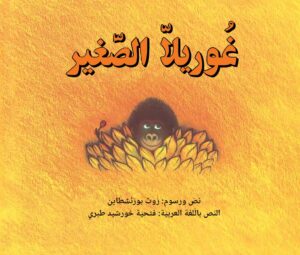 Little Gorilla
Little Gorilla 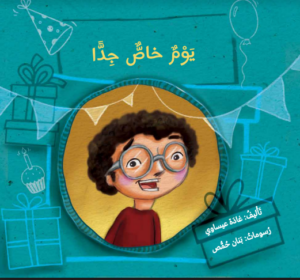 A Very Special Day
A Very Special Day 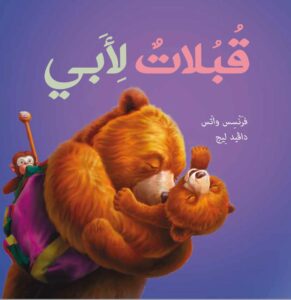 Kisses for Daddy
Kisses for Daddy 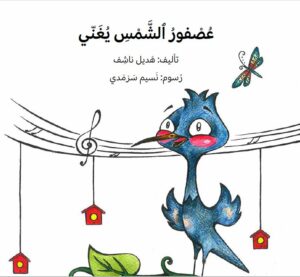 The Sunbird Sings
The Sunbird Sings 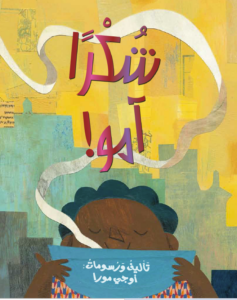 Thank You Omu
Thank You Omu 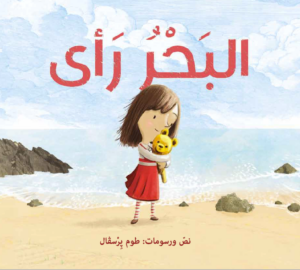 The Sea Saw
The Sea Saw 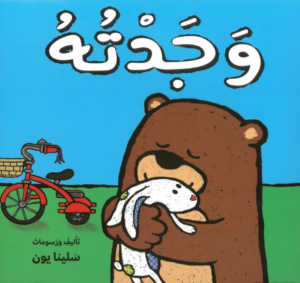 Found
Found 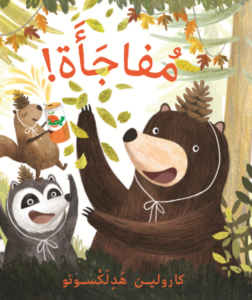 Surprise!
Surprise!  How Much I Laugh!
How Much I Laugh! 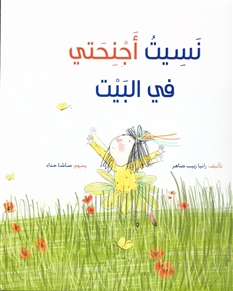 I Forgot My Wings At Home
I Forgot My Wings At Home 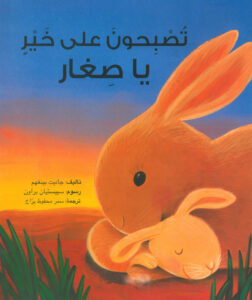 Good Night Little Ones
Good Night Little Ones 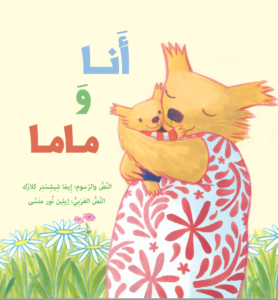 Mummy and Me
Mummy and Me 
